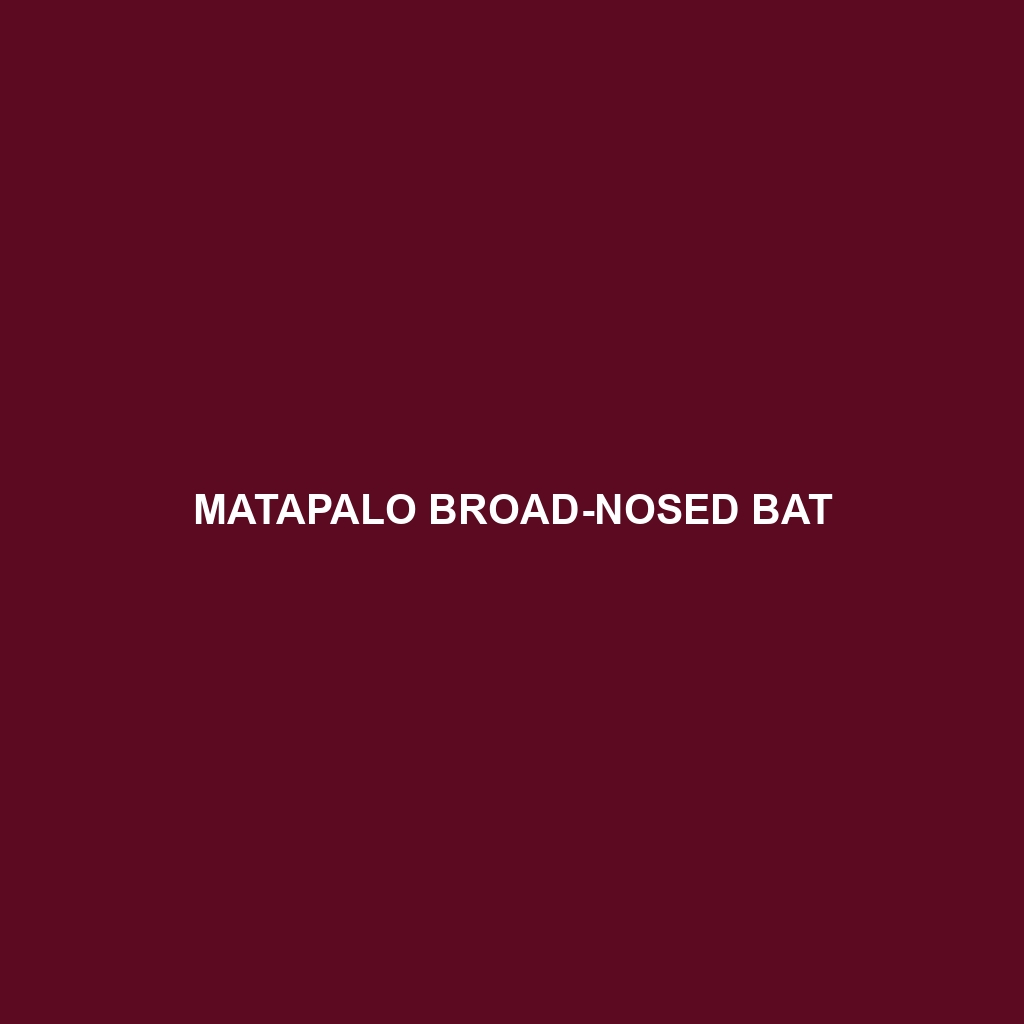Quechuan Broad-nosed Bat
Common Name: Quechuan Broad-nosed Bat
Scientific Name:
Habitat
The Quechuan Broad-nosed Bat is primarily found in the Andean mountain range, specifically in the temperate forests and montane grasslands of Peru and Bolivia. This species thrives in areas with a high elevation and dense vegetation, relying on specific microhabitats that provide shelter and resources.
Physical Characteristics
This bat typically measures between 10 to 12 cm in body length, with a wingspan ranging from 25 to 30 cm. Its fur is a rich brown to dark grey, providing effective camouflage against the forest surroundings. Distinctive features include a broad, flat nose which gives the bat its common name, and large ears that are adept at detecting ultrasonic signals. The Quechuan Broad-nosed Bat has a robust body shape, which aids in its foraging activities.
Behavior
The Quechuan Broad-nosed Bat exhibits nocturnal activity patterns, emerging at dusk to forage for food. It is known for its agile flight and remarkable echolocation abilities, which it uses to navigate through the dense forest. This bat often roosts in colonies, utilizing tree hollows and rocky crevices for protection during the day. Social interaction within colonies is common, as they communicate through a series of high-frequency sounds.
Diet
The diet of the Quechuan Broad-nosed Bat primarily consists of fruit, nectar, and small insects. They are particularly attracted to flowering plants and fruits that are abundant in their habitat, making them essential pollinators in their ecosystem. This feeding behavior not only sustains the bat but also promotes plant reproduction, highlighting their role in the environment.
Reproduction
Breeding for the Quechuan Broad-nosed Bat occurs typically during the warmer months, with a gestation period of approximately 2 to 3 months. Females give birth to one offspring at a time, which is dependent on its mother for survival in its early stages. Maternal care is strong, and mothers often gather in communal roosts to enhance protection and warmth for their young nurslings.
Conservation Status
The Quechuan Broad-nosed Bat is currently classified as endangered due to habitat loss from deforestation, agricultural expansion, and climate change. Conservation efforts are crucial to preserve their natural habitats and ensure the survival of this unique bat species.
Interesting Facts
One fascinating aspect of the Quechuan Broad-nosed Bat is its crucial role in pollination. Known for visiting a wide variety of flowering plants, they help in the transfer of pollen, which is vital for the reproduction of many local flora. Additionally, these bats contribute to the ecosystem by controlling insect populations.
Role in Ecosystem
The Quechuan Broad-nosed Bat plays an integral role in maintaining ecological balance. As pollinators, they facilitate the reproduction of many plants within their habitat, which in turn supports the broader food web. Their presence helps sustain other wildlife by ensuring a diversity of plant life, contributing to the overall health of their ecosystem.
